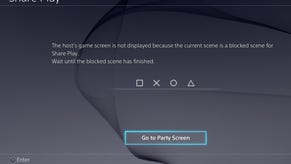Next-Gen Face-Off: Call of Duty: Ghosts
Life of Riley.
With the release of the PC version of Call of Duty: Ghosts, Infinity Ward offered up a first taste of its vision for the future of the megabucks Call of Duty franchise and now - finally - we have both Xbox One and PlayStation 4 versions in-house, allowing us to ascertain just how close the next-gen console editions will match up. In truth, we went into this feature with lowered expectations, the Resolutiongate debacle suggesting that, on Xbox One at least, Infinity Ward had significant issues coping with the transition to the new generation of console hardware.
Not that PlayStation 4 got off lightly, with the initial retail release suffering from performance problems, along with a bug that set native resolution to 720p instead of the previously announced full HD 1080p presentation - something that was recently addressed with a day-one patch. With all of this drama in mind, just how close do the next-gen consoles get to the PC gold standard, and are we looking at a worthwhile jump in quality that justifies the increased price tag that comes with next-generation software?
To kick things off, we start by taking a look at the PS4 and Xbox One versions of the game - both patched and updated - with comparison video and screenshot assets. Here it's abundantly clear that one platform has a distinct advantage over the other owing to the vast resolution differential: fine details, subtle edges and complex scenery all appear sharper and more defined on PlayStation 4, while these elements simply aren't displayed with the same level of clarity on Xbox One, giving the game a distinctly fuzzy look that doesn't really tally with our expectations of a next-gen experience.
With the day-one patch enabled, we are looking at a native 1080p framebuffer on the new Sony console, backed up with a post-process anti-aliasing solution that looks very similar to FXAA. The crisp imagery associated with full HD visuals is clearly visible throughout the bombastic campaign and multiplayer modes, although the post-process AA leads to some light smoothing of texture details and specular highlights, giving the game a softer look than the PC version - which in all of our media we have operating with traditional multi-sampling (4x MSAA, in this case).
"It's not just the 720p issue that lets down the Xbox One game - the hardware scaler's over-sharpening seems to emphasis the resolution deficiency rather than mitigate it."
Alternative comparisons:
Owners of Microsoft's new console aren't treated to the same level of quality in this area. 720p - also featuring the same post-process anti-aliasing - is confirmed, which is then upscaled to 1080p by the console before arriving on your TV screen. On top of that, a strong sharpening filter is also applied over the entire 720p image, encompassing both in-game imagery along with the HUD elements and even the main menu screens. Based on the fact that we're seeing something very similar in Killer Instinct and Dead Rising 3, we have a feeling that this may actually be part of the Microsoft upscaling solution - and we don't like it.
The end result isn't a particularly pretty sight: harsh edges are further accentuated over the additional jaggies created by the upscaling, while fine details, foliage, and the surface of water all appear quite grainy in comparison to the PS4 and PC versions. It's a crushing step down from the PS4's much clearer 1080p presentation, taking away some of the finesse expected from a next-generation product, but thankfully it's also something that you can opt out of.
While there's nothing you can do to increase the native resolution of the Xbox One game, it is possible to disable the sharpening filter by switching the console's output resolution to 720p. With that in mind it's rather baffling as to why Microsoft would choose to bork image quality in such a way by default, especially considering that we actually see more detail resolved when the unmolested 720p output is upscaled by our display - though your screen may (or may not) add a frame or two of processing lag to carry out its own upscaling calculation. Perhaps the team behind the Xbox One hardware thought that the sharpened look might help to hide the deficit in resolution, but in truth it does more harm than good.
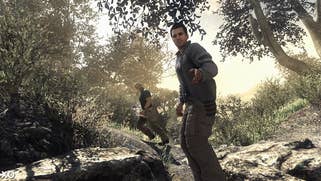
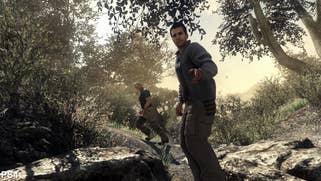
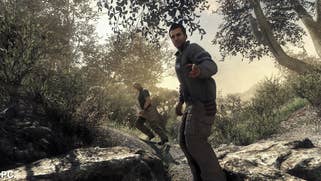



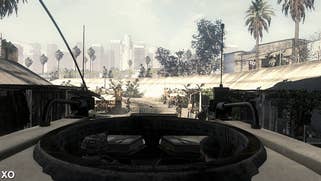

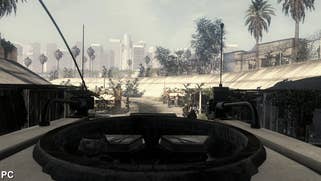
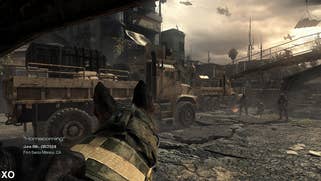
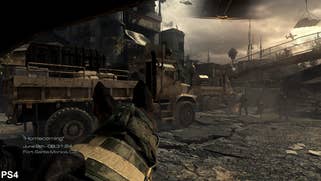
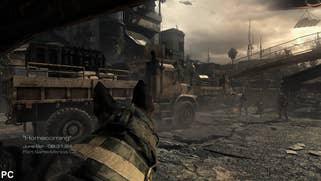
Beyond the resolution issue, both versions are mostly identical where the core artwork is concerned. The pool of assets and graphical effects appears to be mostly derived from the high-end PC game to various degrees, with the majority of the key features left intact. The tessellated characters are particularly impressive with their smooth facial features and high level of complexity, while the use of physics-driven particle effects also stands out, enhancing water splashes, dust, and debris as they are thrust up through the air, adding atmosphere to the war-torn cityscapes and the more lush natural environments on offer. The use of simulated global illumination is also present over the simpler real-time lighting model featured on current-generation consoles, and this is backed up by the use of screen-space reflections on glossy surfaces, along with additional shader effects that more realistically represent various materials when they are illuminated by dynamic light sources.
The core look of the PC game is well preserved on the next-gen systems, then - up to a point - but the PS4's resolution advantage gives it a considerable boost in quality over that of the rougher-looking Xbox One version. However, Infinity Ward hasn't managed to bring over the visual prowess of the flagship PC release without making a few graphical compromises along the way, preventing the next-gen consoles from delivering the same top-spec graphical experience.
Lower-resolution textures are utilised, leading to various surfaces featuring less in the way of high-frequency detail. Shadow quality also takes a noticeable dive: harsh edges and stair-step patterns align those elements closely with those found in the current-gen builds of the game, complete with visible transitions between shadow map cascades - something that we were hoping would be a thing of the past with the switch to more powerful hardware.
Moving on to visual effects, we find that particles and alpha appear slightly pared back on both consoles in certain scenes: water splashes in particular take a noticeable hit in resolution on Microsoft's system, looking chunkier and less detailed as a result. Meanwhile, on both consoles SSAO replaces the top-end horizon based alternative available on PC, leading to less impressive ambient shadow coverage across the game.
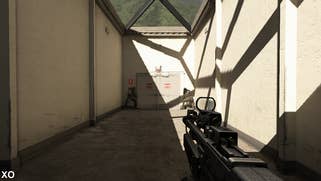
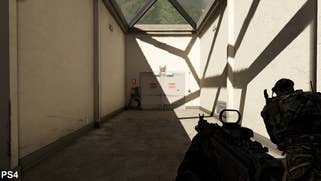




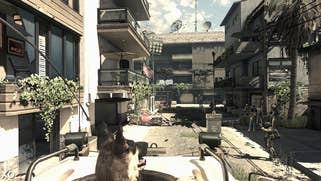
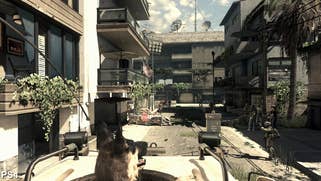

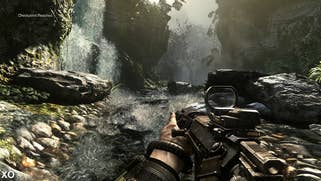
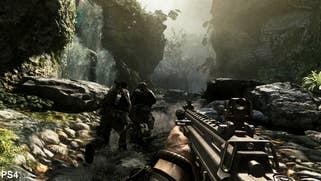
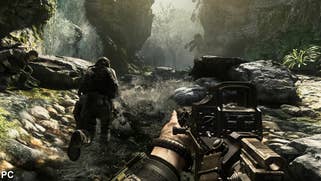
So, on the whole we are still looking at a massive upgrade over what is possible on current-generation hardware, despite some noticeable nips and tucks from the PC release. However, the 1080p presentation on PlayStation 4 makes a huge difference: the quality of the effects work, modelling, and textures is all the more apparent due to the cleaner and crisper image on display here.
Call of Duty: Ghosts - performance analysis
Moving onto performance, Call of Duty: Ghosts once again targets the slick 60fps gold standard that defines the series. Both Xbox One and PS4 frequently manage to deliver the same silky smooth gameplay at similarly high frame-rates throughout the campaign, although the perceptual 60fps update is compromised more often on Sony's system when the engine is under load, with lows of around 40fps in the most demanding scenes.
In fact, some of the more graphically intensive stages see the appearance of noticeable frame-rate drops and screen tear - the latter coming as a particular surprise bearing in mind how the series has historically relied on the visual consistency of v-sync. At one point we even see the Xbox One game drop close to the 30fps mark, but this lasts for only a brief moment during a point where the player's interaction with the game is limited.
On Xbox One, we only really see performance impacted during the heavier action scenes in the single-player campaign, mostly occurring when the player has reduced control, with regular fire-fights mostly going by without a hitch, giving us the fast, precise gameplay we expect. By comparison, stability isn't achieved to quite the same degree on Sony's next-gen console. This is particularly noticeable during a beach-front assault in an earlier stage, where we see a locked 60fps on the XO but several frame-rate drops on the PS4 along with pockets of tearing. These short but noticeable dips in smoothness result in some judder appearing on-screen along with a quick reduction in controller response, which can very briefly impact your ability to make split-second precision shots.
"What's clear is that Xbox One enjoys smoother frame-rates - and a locked 60fps in multiplayer - while the native 1080p presentation on PS4 comes at the expense of an unfortunate, noticeable performance penalty."
Having the appearance of judder and visible tearing in a Call of Duty game is disappointing, and on the PS4 at least we get the feeling that things simply aren't optimised quite as well as they should be - something that is clear from the resolution error and juddering issues in the unpatched retail build. However, in fairness these issues do affect both platforms at times, with a later mission set in detail-rich jungle environments seeing the level of smoothness compromised on a frequent basis. The Xbox One game recovers more quickly, restoring the desired 60fps response for longer periods, but neither platform delivers the faultless update we would expect from the series.
Moving onto online multiplayer, this aspect of the game appears to be more stable across both consoles. There are no dramatic set-pieces on offer here, and the showcase environmental destruction takes a back seat to more static locations where players create their own spectacle in the form of well-placed head shots and sneaky close quarters melee takedowns. In fact, we didn't notice any obvious drops in frame-rate at all where the Xbox One version of the game is concerned, with the solid 60fps update producing smooth, judder-free gameplay and crisp controls.
The experience isn't quite as consistent on the PS4, with short bouts of slowdown and judder sometimes cropping up throughout matches due to the appearance of torn and dropped frames. While the judder this causes is distracting at times, the effects appear to be reduced over the pre-patched version of the game, so these issues never completely ruin the overall flow of play even though they're annoying. On the plus side, it's much easier to pick out distant targets on the PS4 due to the native 1080p presentation, where fine details are better resolved compared to the Xbox One's lower-resolution image.
"There's a palpable increase in graphical quality when comparing the best current-gen version to the cream of the next-gen releases - but no real feeling that gameplay has moved on to match it."
Call of Duty: Ghosts - the Digital Foundry verdict
Each next-gen console version has its strengths and weaknesses, but clearly it is the PS4 game that offers a superior experience overall. The advantage here comes in the form of cleaner and sharper visuals that help to better realise the extra next-gen spit and polish on display over the 360, PS3, and Wii U versions of the game - something that Xbox One's upscaled 720p presentation fails to do in quite the same way. However, the Xbox One version has its own charms in the form of a smoother, more consistent frame-rate.
Indeed, the performance impact on PlayStation 4 is something of a disappointment, and those expecting a solid 60fps presentation that closely matches the glory days of the original Modern Warfare are sure to be let down in this regard. In that respect, from a purely gameplay perspective the Xbox One game has the edge, and this translates into a more fluid experience when playing online, with the hiccups seen on the PS4 title restricted to the game's campaign mode. It's an interesting situation considering that while the smoother frame-rate clearly benefits gameplay on the Xbox One, the resolution deficit makes it harder to consistently pick out enemies from a distance compared to the PS4 version - something that is also worth bearing in mind.
If you can throw enough horsepower at the PC version of the game, this offers the definitive experience - but in a world where even a GTX Titan can't run this game at a locked 1080p60 at max settings, it's clear that optimisation is a real issue. The strength of console gaming is that the onus in delivering the best possible performance rests squarely on the developer - and in this case, the PlayStation 4 version gets closest to delivering the high-end experience. While the frame-rate issues aren't fully resolved, the day-one patch improved things considerably, and online play certainly isn't the broken, stuttering mess it is sometimes portrayed as.
But with Battlefield now running at 60fps on console, and offering a raft of technological improvements into the bargain, we can't help but feel that Call of Duty is starting to lose momentum; that the graphical improvements aren't quite enough, and the gameplay formula is now a little too well-worn.
Ghosts comes across as good enough, but not spectacular - singularly lacking the next-gen foundations that DICE will only build upon after the successful deployment of Battlefield 4.






